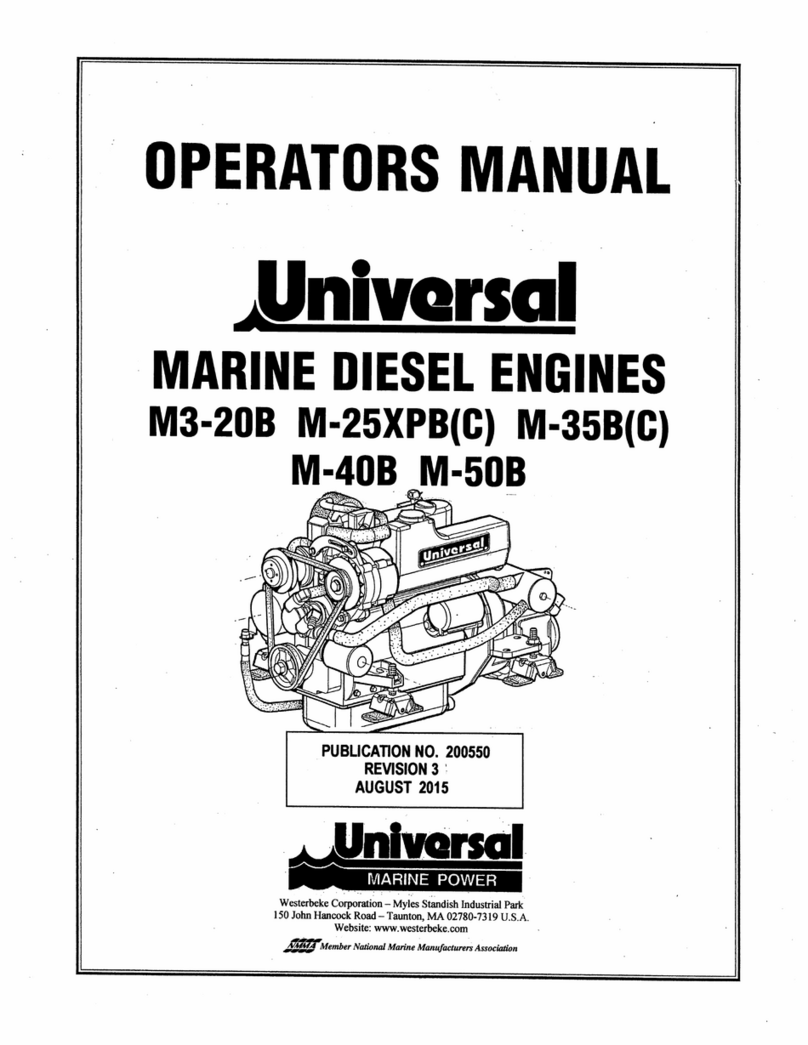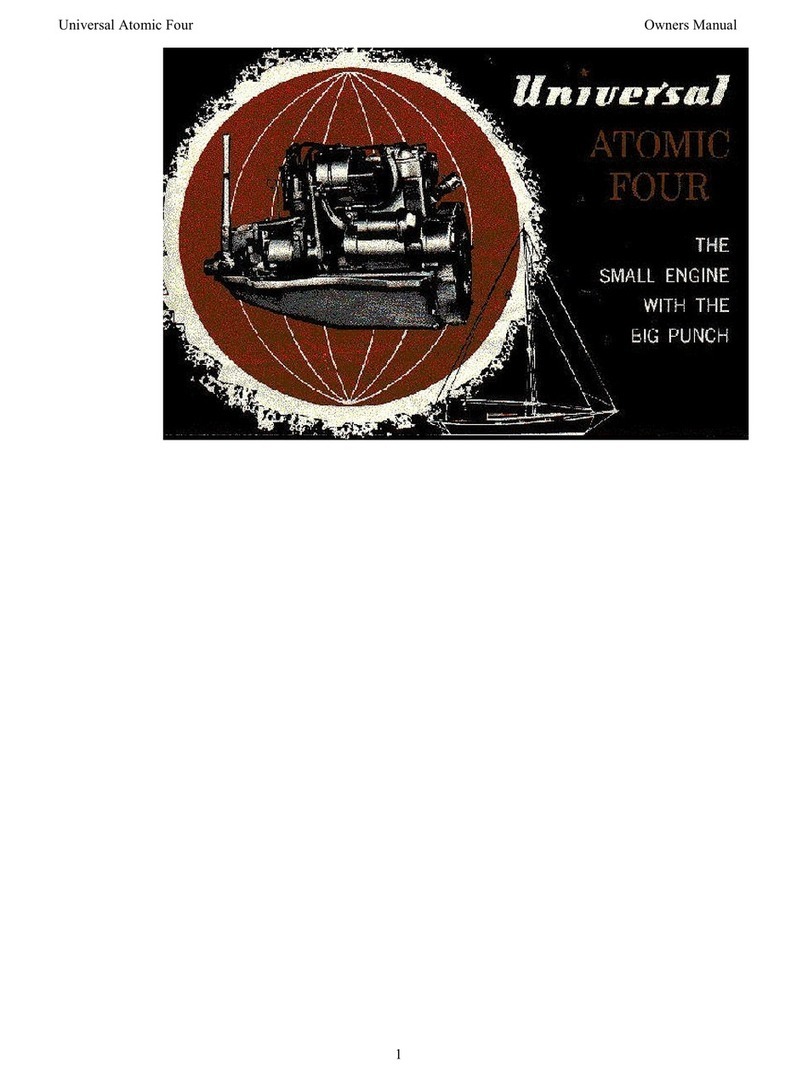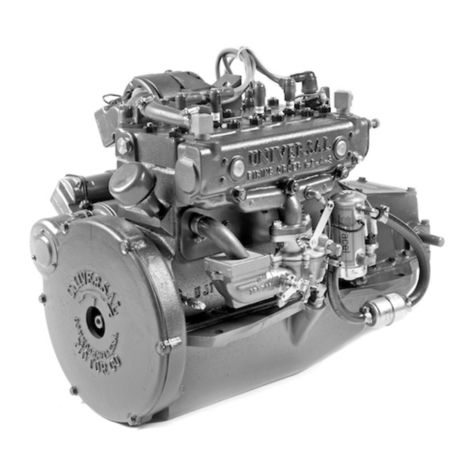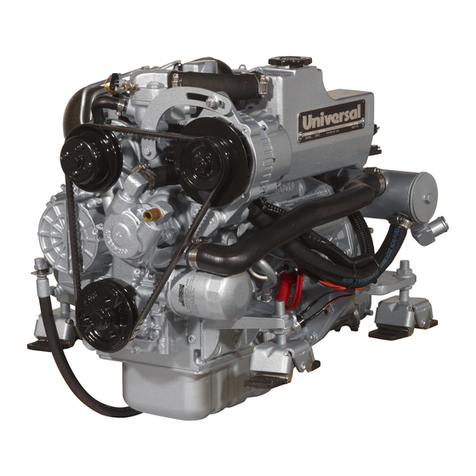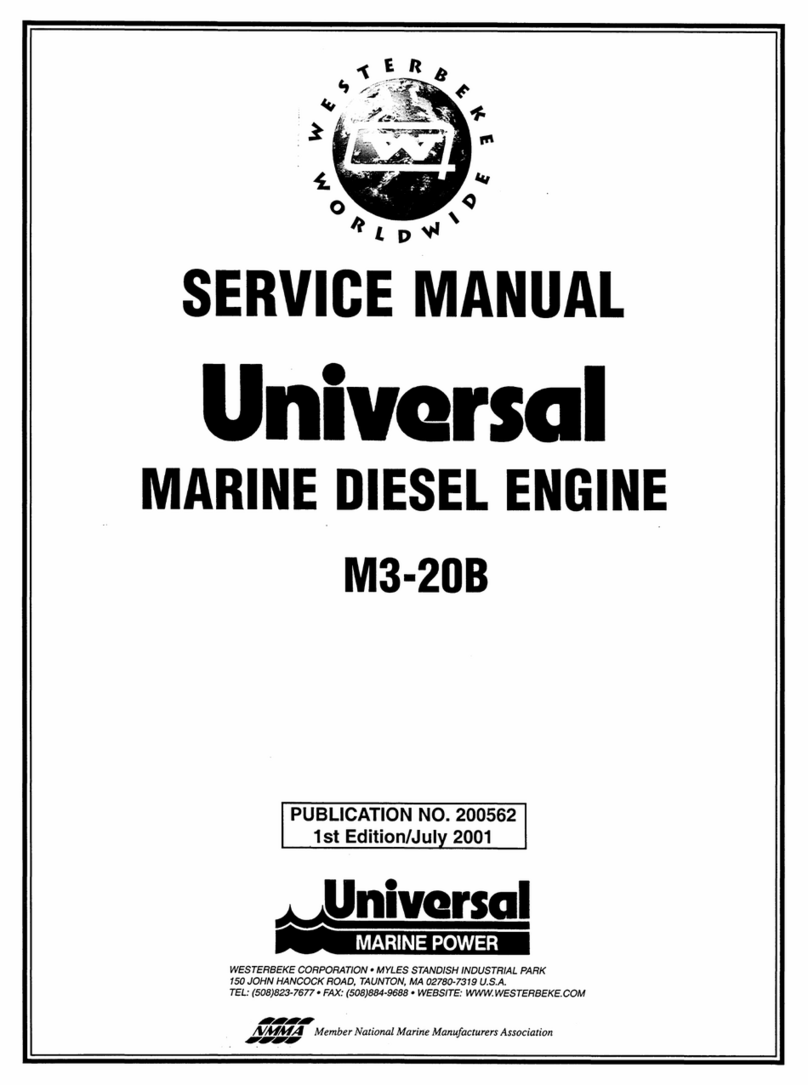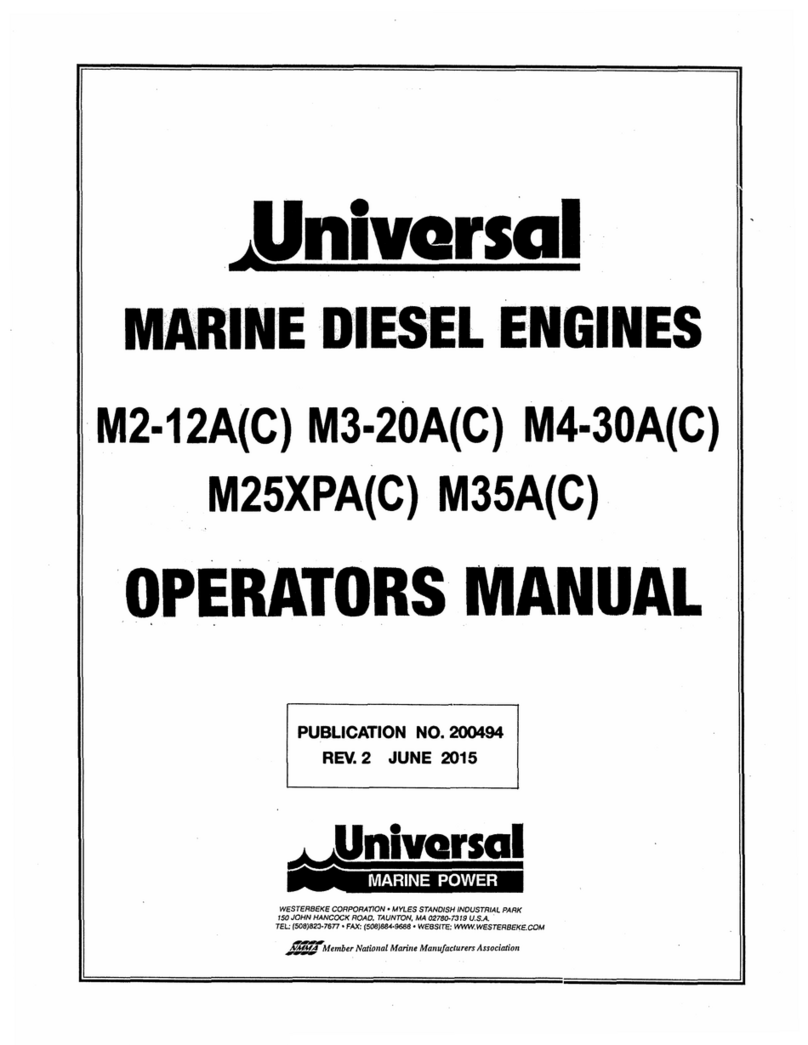
SAFETY
INSTRUCTIONS
PREVENT
BURNS
-
EXPLOSION
(continued)
• Follow re-fueling safety instructions. Keep the vessel's
hatches closed when fueling. Open and ventilate cabin
after fueling. Check below for fumes/vapor before running
the blower. Run the blower for four minutes before start-
ing your engine.
• All
fuel
vapor.; are highly explosive. Use extreme care when
handling and storing fuels. Store fuel in a well-ventilated
area away from spark-producing equipment and
out
of
the
reach
of
children.
• Do not fill the fuel tank(s) while the engine is running.
• Shut off the fuel service valve at the engine when servicing
the fuel system. Take care in catching any fuel that might
spill. DO NOT allow any smoking, open flames,
or
other
sources
of
fire
near
the fuel system
or
engine when servicing.
Ensure proper ventilation exists when servicing the fuel
system
.
• Do not alter
or
modify the fuel system.
•
Be
sure all fuel supplies have a positive shutoff valve.
•
Be
certain fuel line firtings are adequately tightened and
free
of
leaks.
• Make sure a fire extinguisher is installed nearby
and
is
properly maintained.
Be
familiar with its proper use.
Extinguisher.; rated
ABC
by the NFPA are appropriate
for all applications encountered in this environmenL
ACCIDENTAL
STARTING
I
A
WARNING:
Accidetrtal
slaTting
can
cause
iajuty
·
ar
death!
• Disconnect the battery cables before servicing the engine!
generator.
Remove
the
negative
lead
first
and
reconnect
it last.
• Make certain all personnel are clear
of
the engine before
starting.
• Make certain all covers, guards, and hatches are re-
installed before starting the engine.
ii
BATTERY
EXPLOSION
I
A
WARNING:
Battery
explasian
can
cause
injury
·
ardeath!
• Do not smoke
or
allow an open flame near the battery
being serviced. Lead acid batteries emit hydrogen, a
highly explosive gas, which
can
be ignited by electrical
arcing
or
by lit tobacco products. Shut
off
all electrical
equipment
in
the
vicinity
to
prevent
electrical
arcing
during
seJVicing.
• Never connect the negative
(-)
battery cable to the posi-
tive (+) connection terminal
of
the starter solenoid. Do not
test the battery condition by shorting the terminals
together. Sparks could ignite battery
gases
or
fuel vapor.;.
Ventilate
any
compartment
containing
baneries
to
prevent
accumulation
of
explosive gases. To avoid sparks, do not
disturb the battery charger connections while the battery is
being cbarged.
•
Avoid
contacting
the
terminals
with
tools, etc
.,
to
prevent
bums
or
sparks
that
could cause
an
explosion.
Remove
wristwatch, rings,
and
any other jewelry before handling
the battery.
• Always tum the battery cbarger off before disconnecting
the battery connections. Remove the negative lead first
and reconnect it last when disconnecting the battery.
BATTERY
ACID
A
WARNING:
Sulphuric
acid
in
batteries
can
cause
sereTe
iajury
/If
death!
• When servicing the battery
or
checking the electrolyte
level,
wear
rubber
gloves, a
rubber
apron
,
and
eye
protec-
tion. Batteries contain sulfuric acid which is destructive.
If
it
comes
in
contact
with
your
skin,
wash
it
off
at
once
with water. Acid may splash on tbe skin
or
into the eyes
inadvertently when removing electrolyte caps.
